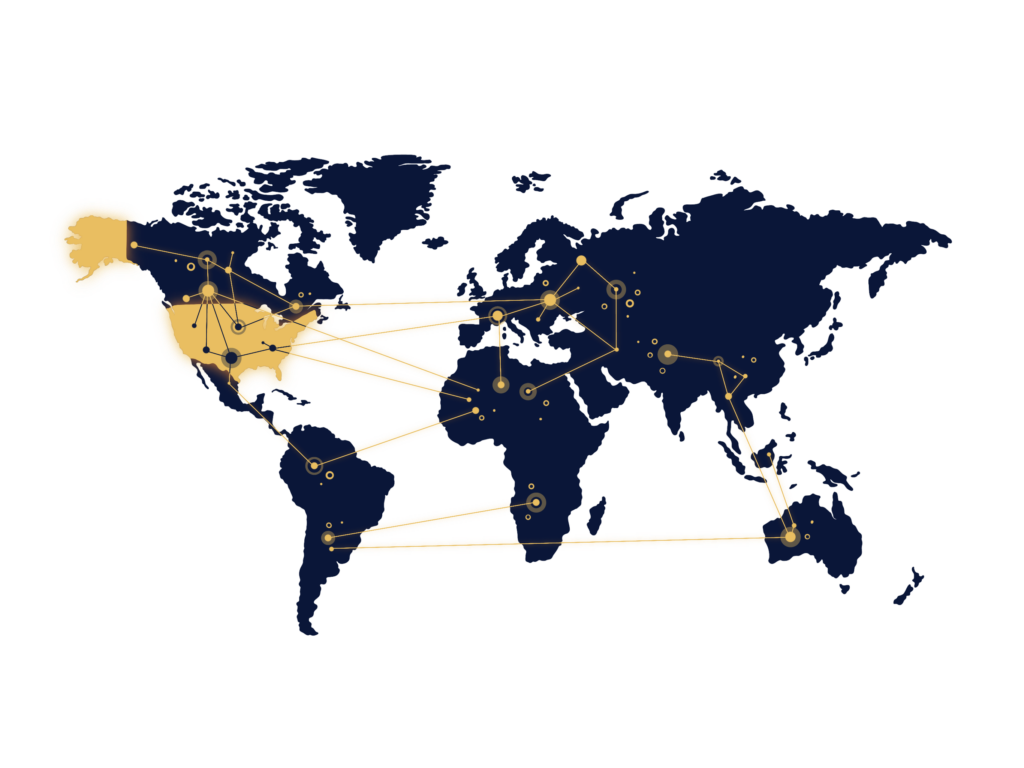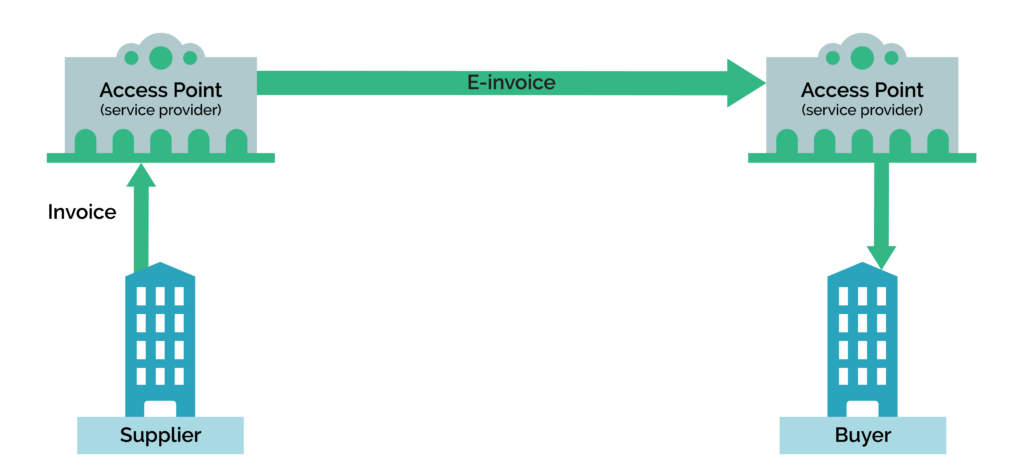Digital Business Networks Alliance (DBNA)

E-INVOICING IN THE U.S.
New Open Exchange Network
Currently the B2B payments industry in the United States is severely challenged by inefficient and costly manual processes.
That’s why the DBNAlliance, with support from various industry bodies, has recently launched its own open exchange network.
This network enables a secure and efficient exchange of B2B e-invoices and e-documents for companies in the United States.
The Exchange Framework
The Exchange Framework was developed to solve the difficult issue businesses face when trying to connect with one another. Through a set of standards and policies, the Exchange Framework allows businesses to connect once, and share electronic invoices with one another, regardless of the platform, system, application or network they use for processing invoices.

Why an Exchange Framework?
For Buyers, the framework provides a streamlined approach to the exchange of business documents, enabling all members of a company’s supply chain to connect to the framework and submit invoices electronically to their customers – regardless of the Access Point Service Provider used.
For Suppliers, the framework enables organizations to exchange business documents with their customers, streamlining the invoice-to-cash process and reducing exceptions. The framework also promotes an environment of interoperability, allowing suppliers to easily connect to virtually any e-invoicing Access Point service provider and submit invoices to customers.
For Access Point service providers, the framework facilitates the connection of buyers and suppliers, simplifying a supplier’s connection and ensuring that connection meets their customers’ business rules. The framework enables Access Point service providers to enroll more suppliers onto their network, providing greater supply chain engagement for their buyer clients and improving straight-through processing.





How does the Exchange Framework work?
The exchange framework contains four types of participants – the supplier, two access points otherwise known as service providers, and the buyer – known as a four-corner network. The exchange framework enables the exchange of an e-invoice between businesses – regardless of software used – by enabling a reliable connection and document exchange standards.
Suppliers send invoice information to their access provider. Their access point connects to the Exchange Framework and searches for the Buyer’s access point. Once located, the supplier’s access point packages the invoice into the exchange standard, and securely sends the invoice to the buyer’s access point. The Buyer’s access point forwards the invoice data into the Buyer’s AP system for approval and processing for payment.
You are currently viewing a placeholder content from YouTube. To access the actual content, click the button below. Please note that doing so will share data with third-party providers.
More InformationWhat are Access Points?
Access Points are the service providers who enable suppliers and buyers to connect with each other. The power behind Exchange Framework is the open, non-proprietary standards that enable different types of technologies and service provider businesses use to operate their back-office processes.
For example, the types of service providers who can operate as access points include:
- B2B Networks
- AP Providers
- ERP Software
- Lockbox Providers
- Corporates
- AR Solution Providers
- Procurement Software
- Bank / Financial Institutions
- Billing Providers
- E-invoice Service Providers
- Accounting Software
- Optical Character Recognition (OCR) Providers
- Payment Service Providers
How to Become an Access Point?
To be an Access Point on the Exchange Framework, you need to become a full member of the Digital Business Networks Alliance.
See the membership section of the DBNA website to learn more on the benefits of being a full member.


